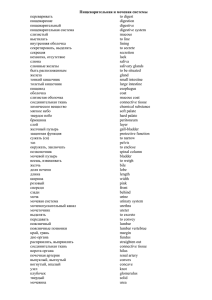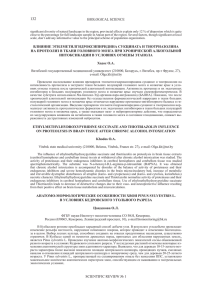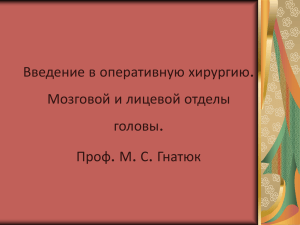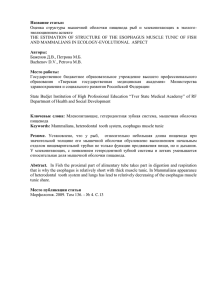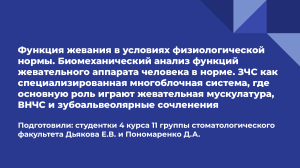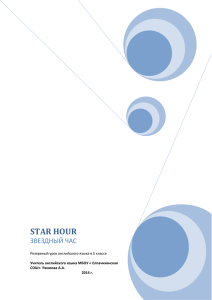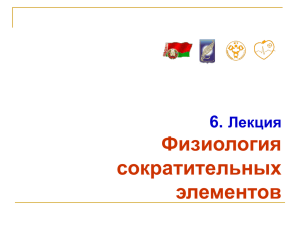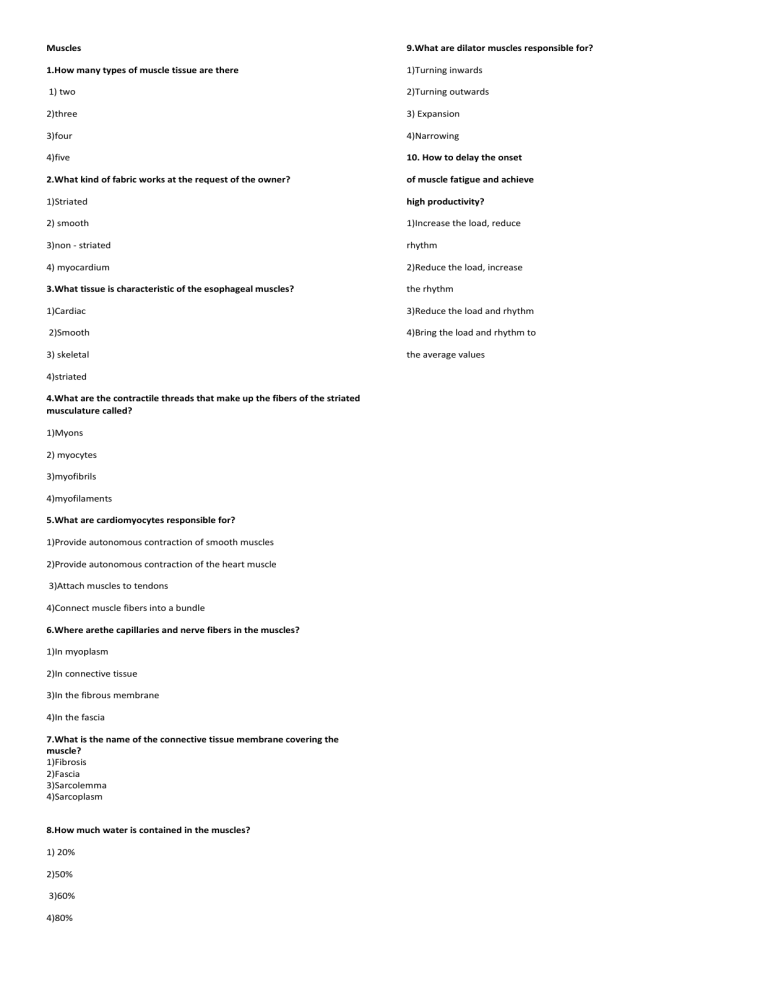
Muscles 9.What are dilator muscles responsible for? 1.How many types of muscle tissue are there 1)Turning inwards 1) two 2)Turning outwards 2)three 3) Expansion 3)four 4)Narrowing 4)five 10. How to delay the onset 2.What kind of fabric works at the request of the owner? of muscle fatigue and achieve 1)Striated high productivity? 2) smooth 1)Increase the load, reduce 3)non - striated rhythm 4) myocardium 2)Reduce the load, increase 3.What tissue is characteristic of the esophageal muscles? the rhythm 1)Cardiac 3)Reduce the load and rhythm 2)Smooth 4)Bring the load and rhythm to 3) skeletal the average values 4)striated 4.What are the contractile threads that make up the fibers of the striated musculature called? 1)Myons 2) myocytes 3)myofibrils 4)myofilaments 5.What are cardiomyocytes responsible for? 1)Provide autonomous contraction of smooth muscles 2)Provide autonomous contraction of the heart muscle 3)Attach muscles to tendons 4)Connect muscle fibers into a bundle 6.Where arethe capillaries and nerve fibers in the muscles? 1)In myoplasm 2)In connective tissue 3)In the fibrous membrane 4)In the fascia 7.What is the name of the connective tissue membrane covering the muscle? 1)Fibrosis 2)Fascia 3)Sarcolemma 4)Sarcoplasm 8.How much water is contained in the muscles? 1) 20% 2)50% 3)60% 4)80% (Перевод) 7.Как называется соединительнотканная оболочка, Мышцы покрывающая мышцу? ответ2 1)Сколько существует видов мышечной ткани? (ответ 3) 1)Фиброз 1)два 2)Фасция 2)три 3)Сарколемма 3)четыре 4)Саркоплазма 4) пять 8.Сколько воды содержится в мышцах? Ответ 4 2.Какой вид ткани работает по желанию владельца? (Ответ 1) 1)20% 1)поперечнополосатая 2)50% 2)гладкая 3)60% 3)неисчерченная 4)80% 4) миокард 9. За что отвечают мышцы- 3.Какая ткань характерна для мышц пищевода? Ответ 2 дилататоры? Ответ 3 1сердечная 1)Поворот внутрь 2гладкая 2)Поворот наружу 3скелетная 3)Расширение 4исчерченная 4)Сужение 4.Как называются сократительные нити, составляющие волокна поперечнополосатой мускулатуры? Ответ 3 10. Как отсрочить наступление переутомления мышц и добиться 1мионы высокой продуктивности? Ответ4 2миоцыты 1)Увеличить нагрузку, уменьшить 3миофибриллы ритм 4миофиламенты 2)Уменьшить нагрузку, увеличить 5.за что отвечают кардиомиоциты ответ 2 ритм 1)Обеспечивают автономное 3)Уменьшить нагрузку и ритм сокращение гладкой мускулатуры 2)Обеспечивают автономное сокращение сердечной мышцы 3)Прикрепляют мышцы к сухожилиям 4)Соединяют мышечные волокна в Пучок 6.Где в мышцах находятся капилляры и нервные волокна? ответ2 1)В миоплазме 2)В соединительной ткани 3)В фиброзной оболочке 4)В фасции 4)Привести нагрузку и ритм к средним значениям. Ткани Fabrics 1. Glial cells are tissue cells: 1. Глиальные клетки – это клетки ткани: а) нервной + б) эпителиальной в) соединительной a) nervous + b) epithelial c) connective 2. Место контакта аксона с дендритом называется: а) синтоник б) синапс + в) симптом 2. The place of contact of the axon with the dendrite is called: a) syntonic b) synapse + 3. Стенки сосудов и внутренних органов образованы клетками: а) поперечно-полосатой сердечной мышечной ткани б) поперечно-полосатой скелетной мышечной ткани в) гладкой мышечной ткани + c) symptom 3. The walls of blood vessels and internal organs are formed by cells: a) striated cardiac muscle tissue 4. Из каких мышечных волокон состоит большинство внутренних органов: а) гладких мышечных + б) поперечно-продольных мышечных в) поперечно–полосатых мышечных b) striated skeletal muscle tissue c) smooth muscle tissue + 4. Which muscle fibers make up the majority of internal organs: a) smooth muscle + 5. Способность к регенерации наиболее выражена у клеток: а) нервной ткани б) мышечной ткани в) эпителиальной ткани + b) transverse-longitudinal muscle c) striated muscle 5. The ability to regenerate is most pronounced in the cells of: 6. К какому виду тканей относится кровь: а) эпителиальная б) соединительная + в) сердечная a) nervous tissue b) muscle tissue c) epithelial tissue + 7. Слизистые оболочки внутренних органов образованы: а) соединительной тканью б) мышечной тканью в) эпителиальной тканью + 6. What kind of tissues does blood belong to: a) epithelial b) connective + 8. Основное свойство этой ткани — способность сокращаться: а) мышечная + б) эпителиальная в) нервная c) cardiac 7. The mucous membranes of internal organs are formed by: a) connective tissue 9. В организме человека выделяют основных типов тканей: а) 5 б) 3 в) 4 + b) muscle tissue 10. Клетки этих тканей сомкнуты в ряды, межклеточное вещество почти отсутствует: а) сердечная б) эпителиальная + в) соединительная a) muscular + c) epithelial tissue + 8. The main property of this tissue is the ability to contract: b) epithelial c) nervous 9. The main types of tissues are isolated in the human body: a) 5 b) 3 c) 4 + 10. The cells of these tissues are closed in rows, the intercellular substance is almost absent: a) cardiac b) epithelial + c) connecting Сердечно-сосудистая система Сardiovascular system 1.Стенка сердца состоит из следующих слоев: а) эпикард, миокард, эндокард+ б) слизистая, мышечная, хрящевая в) слизистой и серозной г) все верно 1. The heart wall consists of the following layers: a) epicardium, myocardium, endocardium + b) mucous, muscular, cartilaginous c) mucous and serous 2.Сердце человека состоит из _ камер: а) 2 б) 4 + в) 3 г) 5 3.Вена, которая собирает кровь из органов грудной полости: а) верхняя полая вена; + б) нижняя полая вена; в) воротная вена; г) все верно; d) that's right 2. The human heart consists of _ chambers: a) 2 b) 4 + c) 3 d) 5 3.The vein that collects blood from the organs of the thoracic cavity: a) the superior vena cava; + b) the inferior vena cava; c) portal vein; d) that's right; 4.Синусо-предсердный узел находится: а) в месте впадения ВПВ в правое предсердие+ б) между правым и левым желудочкам в) в левом предсердии г) рядом с аортой 4. The sinus-atrial node is located: a) at the confluence of the ERW in the right atrium + b) between the right and left ventricles c) in the left atrium 5. С чего начинается большой круг кровообращения ? а) левого желудочка+ б) левого предсердия в) правого предсердия г) правого желудочка d) next to the aorta 5. Where does the great circle of blood circulation begin? a) left ventricle + b) left atrium 6. Как называется мышечный слой сердца? а) эндокард б) миокард+ в) эпикард г) перикард c) right atrium d) right ventricle 6. What is the name of the muscular layer of the heart? 7.Чем характеризуется первая фаза цикла сердечной деятельности? а) систолой предсердий, диастолой желудочков б) систолой желудочков, диастолой предсердий+ в) систолой предсердий и желудочков г) диастолой предсердий и желудочков a) endocardium b) myocardium + c) epicardium d) pericardium 8. Как называется околосердечная сумка сердца: а) эндокард б) перикард+ в) эпикард г) миокард 9. Чем иннервируется сердце? а) диафрагмалъным нервом; б) блуждающим нервом;+ в) тройничным нервом; г) симпатическими нервами;+ 7. What characterizes the first phase of the cycle of cardiac activity? a) atrial systole, ventricular diastole b) ventricular systole, atrial diastole + c) atrial and ventricular systole d) atrial and ventricular diastole 8. What is the name of the pericardial sac of the heart: a) endocardium 10. Сколько длится систола желудочков? а) 0,1с; б) 0,4 с; в) 0,3 с; + г) 0,8 с. b) pericardium + c) epicardium d) myocardium 9. What innervates the heart? a) the diaphragmatic nerve; b) vagus nerve;+ c) trigeminal nerve; d) sympathetic nerves;+ 10. How long does the ventricular systole last? a) 0.1 s; b) 0.4 s; c) 0.3 s; + d) 0.8 s.
